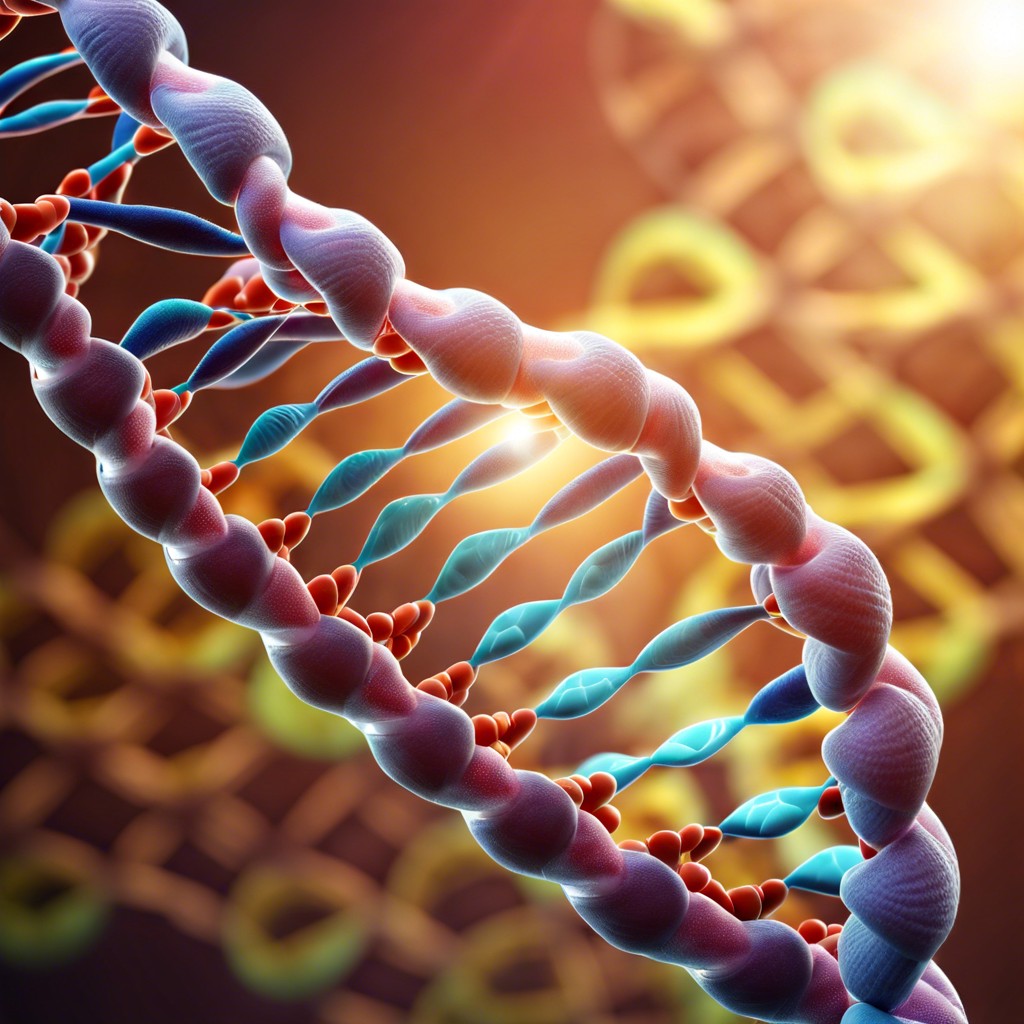Ever wondered what polymer powers your cells’ control center?
Key takeaways:
- DNA is a polymer located in the nucleus.
- DNA holds the blueprint for building proteins.
- DNA replication is a precise and efficient process.
- DNA and RNA have differences in structure and function.
- Genomics research helps decode the mysteries of life.
DNA Structure

It’s time to dive into what DNA actually looks like. DNA, or deoxyribonucleic acid if you want to impress your friends, is a long stringy molecule twisted into a shape called a double helix. Think of it as a twisted ladder.
The sides of this ladder are made up of sugar and phosphate molecules, like the handrails of your stairs. The rungs are pairs of chemicals called nitrogenous bases. There are four types of these bases: adenine (A), guanine (G), cytosine (C), and thymine (T). They pair up in a specific way: A always pairs with T, and C always pairs with G. It’s like a very strict molecular dating service.
The backbone of sugar and phosphate keeps everything nice and stable. Though it sounds fragile, DNA is incredibly tough. It packs itself tightly and neatly into chromosomes, fitting a large amount of information into a tiny space. Nature’s ultimate storage solution!
DNA Function
DNA is like the ultimate instruction manual for living organisms. Here’s what it does:
First, it holds the blueprint for building proteins. Proteins are the worker bees in our cells, doing everything from forming structures to speeding up chemical reactions.
Second, DNA passes genetic information from one generation to the next. Think of it as nature’s way of making sure your mom’s sense of humor sticks around.
Lastly, it helps cells know what they’re supposed to be doing. Each type of cell reads only the part of the DNA instruction manual relevant to its job. Pretty efficient, right?
And that’s why DNA is a big deal in the nucleus.
DNA Replication
Imagine trying to photocopy a book with a photocopier that’s also a world-class chef—precision and efficiency. That’s DNA replication for you!
First, the DNA double helix unzips, like a zipper on a very important pair of pants. Enzymes called helicases break the hydrogen bonds between the bases, separating the two strands.
Next, another enzyme, DNA polymerase, starts to build a new complementary strand for each original strand. Imagine it as a meticulous tailor sewing a custom suit, matching each piece to its counterpart. Adenine pairs with thymine, and cytosine pairs with guanine. Always.
On top of that, there are little primer fragments called RNA primers to kickstart the process, kind of like the first domino in a domino chain reaction. DNA polymerase can’t start from scratch—it needs a bit of help.
Finally, the process is checked for errors because even molecular tailors can make mistakes. Other enzymes come in to proofread and repair any mismatches.
And there you have it—an identical copy of the original DNA, ready to do its thing!
DNA and RNA Differences
DNA and RNA are like cousins at the family reunion—they look alike but have their own quirks.
First off, DNA is the long-term data hoarder. It stores genetic info safely tucked away in the nucleus. RNA, on the other hand, is the go-getter, running around carrying instructions to build proteins.
DNA is double-stranded, ideal for stability. RNA, the single-stranded adventurer, is more flexible but prone to quick turnover.
Then we have the sugar types. DNA has deoxyribose, making it a bit less reactive. RNA prefers ribose, making it more ready to mingle in cellular reactions.
Lastly, in the world of bases, DNA loves thymine, while RNA switches it up with uracil. It’s like preferring tea over coffee.
These differences keep them performing their unique jobs in the cell, almost like yin and yang.
Genomics Research
Genomics research is like a detective story for scientists. They examine DNA sequences to find clues about how genes affect traits, from eye color to the risk of diseases. This research helps us understand the blueprint of life.
Think of scientists as DNA DJs, remixing genes to see what new combinations do. They use powerful tools to read the sequences and compare them across species. Ever wonder why you don’t look like your pet cat? Genomics research can explain that.
Mapping the human genome has been a game-changer. It’s like having a super-detailed map of a city’s subway system, helping scientists navigate the complexities of genetics. This research also opens doors to personalized medicine, where treatments can be tailored to an individual’s genetic makeup.
In short, genomics research is the high-tech sleuthing that helps decode the mysteries of life, leading to breakthroughs in health, agriculture, and even ancestry. Cool, right?
Recap




